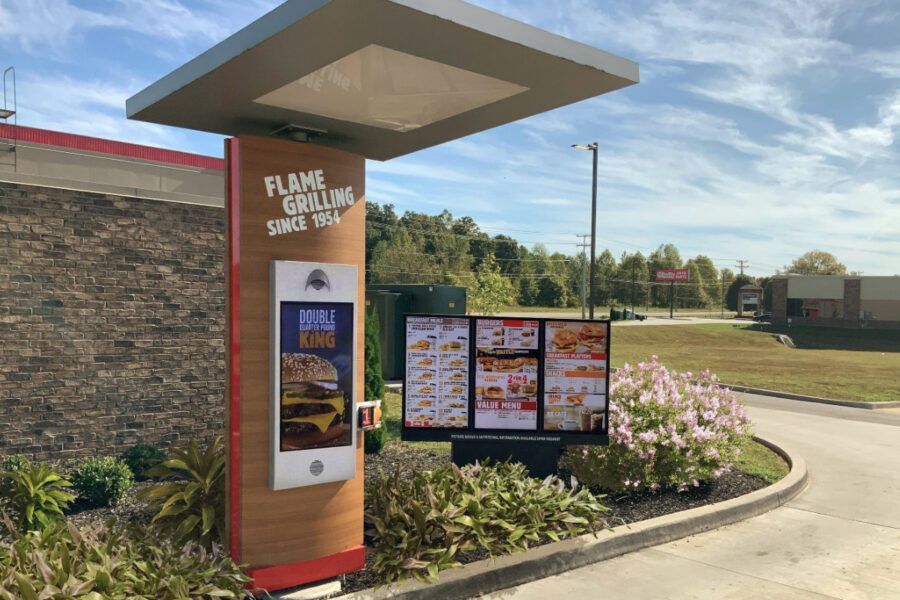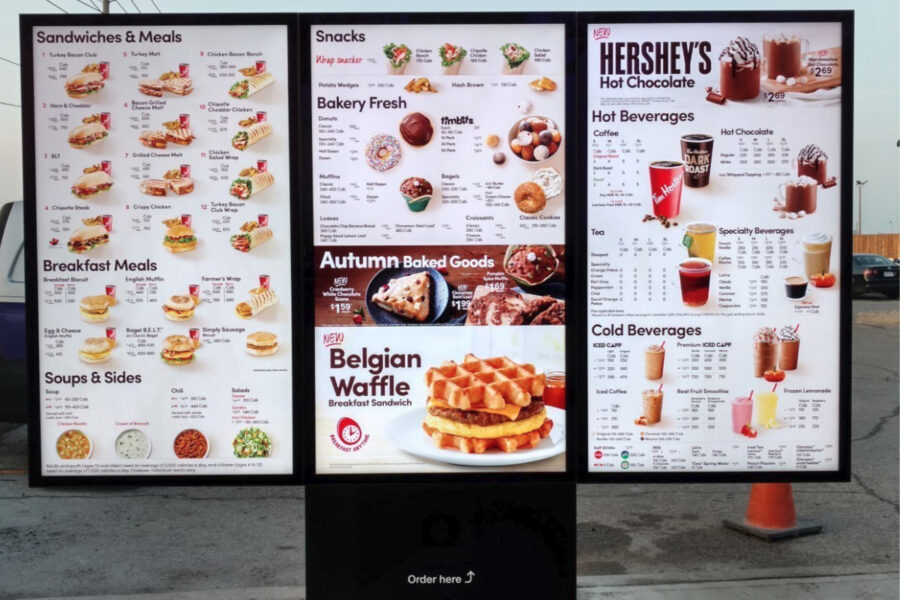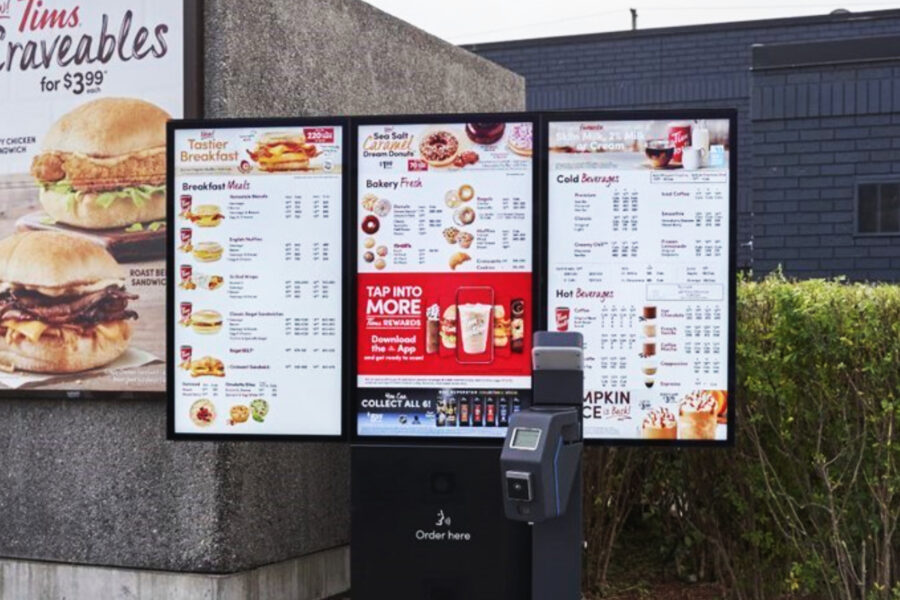TORONTO — Restaurant Brands International, Inc. announced drive-thru enhancements at more than 10,000 Burger King and Tim Hortons locations. New digital menu boards feature predictive selling technology, integration with restaurant loyalty programs and remote, contactless payment.
As of September, the digital drive-thru menu boards have been installed at approximately 800 Tim Hortons locations in the United States and Canada and more than 1,500 Burger King restaurants in the United States. The company’s third brand, Popeyes Louisiana Kitchen, is starting installation at new locations later in the year.
The effort comes as Restaurant Brands’ drive-thru and delivery sales have surged at each of its quick-service chains during the pandemic. In the recent quarter, comparable drive-thru sales increased by double digits over the prior year while delivery sales were up “well into the triple digits across our systems,” said Jose E. Cil, chief executive officer of Restaurant Brands International.
“Given the momentum we’ve seen in off-premise, we’re excited to have ramped up our work to revolutionize our drive-thru experience with the installation of outdoor digital menu board technology at over 10,000 drive-thrus in the US and Canada, the bulk of which we expect to complete by the end of next year,” Mr. Cil said during an Oct. 27 earnings call with securities analysts.
The company’s third-quarter results reflected continued challenges brought on by the pandemic as routines remain on hold and recent spikes in cases have led to renewed restrictions at foodservice establishments. As of the end of September, 96% of the company’s global restaurants were open, Mr. Cil said; however, changes in consumer behaviors have created some variability in the pace of recovery across the company’s regions and dayparts.
Net income attributable to common shareholders of Restaurant Brands International for the three months ended Sept. 30 totaled $145 million, equal to 48¢ per share on the common stock, down from $201 million, or 76¢ per share, in the prior-year period. Results reflected a decrease in income in Tim Hortons and Burger King segments and an unfavorable change from the impact of equity method investments driven by the negative impact of the COVID-19 pandemic and the non-recurrence of a non-cash dilution gain during 2019, partially offset by a decrease in income tax expense, an increase in Popeyes segment income and a decrease in interest expense.
Total revenues declined to $1.34 billion from $1.46 billion the year before.
Global comparable sales declined 12% at Tim Hortons and 7% at Burger King during the quarter. At Popeyes, global comparable sales advanced 17%.
“Sales growth was especially strong in the US, where comparable sales rose almost 20% for the quarter and rose at a similar rate in September,” Mr. Cil said of Popeyes results. “This result comes on top of 10% comparable sales growth during the third quarter of 2019, which is when we initially launched the Chicken Sandwich in August.”
A recent initiative across the company’s brands involved reformulations of popular menu items, including the removal of artificial colors, flavors and preservatives from the Whopper sandwich at Burger King and English muffins and biscuits at Tim Hortons. The company also announced new packaging adjustments that will result in the removal of more than 1 billion single-use plastics in Canada, Mr. Cil said.
“We also launched our innovative cows menu at Burger King where we partnered with scientists to reduce the methane produced by cows that we use in our iconic 100% beef burgers,” he added.









